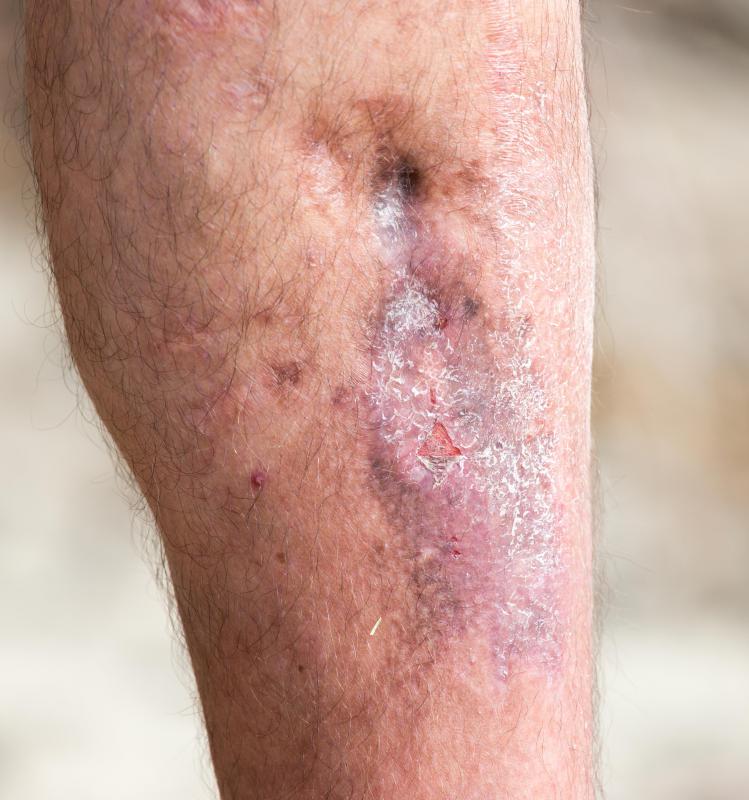At TheHealthBoard, we're committed to delivering accurate, trustworthy information. Our expert-authored content is rigorously fact-checked and sourced from credible authorities. Discover how we uphold the highest standards in providing you with reliable knowledge.
What is Progressive Systemic Sclerosis?
Progressive systemic sclerosis is an autoimmune disease that causes problems with the skin, joints, and internal organs. The defining characteristic of the disease is an overproduction of collagen, a type of connective tissue, in the body. When there is too much collagen, areas of the skin thicken and harden, joints become less mobile, and vital blood vessels are damaged. People who have this condition may experience a variety of symptoms that gradually worsen over time, possibly leading to permanent disability or life-threatening heart and lung conditions. Medications and physical therapy help many patients find some relief from their symptoms, but there is currently no known cure for the disorder.
The causes of progressive systemic sclerosis are not fully understood. Genetic factors are suspected to play a role, but no clear genetic link has been discovered. Long-term exposure to environmental toxins, such as silica dust, pesticides, and epoxy glues, is a common finding among patients. The disease occurs most frequently in adult women around the age of 40.

In many cases, skin changes are the first noticeable symptoms of progressive systemic sclerosis. Blood vessel constriction in the fingers and toes can cause them to turn blue and lose feeling when exposed to even moderate cold, a condition called Raynaud phenomenon. The skin on fingers and toes can also become very thick, and nails may turn fragile and break away. Excess calcium and collagen in finger joints might cause the digits to bend awkwardly and lose dexterity as well. Itchy patches of skin and ulcers on the legs are also common.

The disease can also cause pain and stiffness in major joints such as the knees, elbows, and hips. Digestive problems are common, such as heartburn, frequent nausea, and vomiting. If blood vessels in the lungs are damaged and scarred, a person may have trouble breathing and develop very high blood pressure. Heart failure also is possible if the disease causes inflammation and tissue hardening around the organ.

A team of doctors, including dermatologists and internists, are usually involved in making a diagnosis of progressive systemic sclerosis. Physical exams that reveal major skin changes generally provide the first clues that the disorder exists. X-rays and other diagnostic imaging scans are helpful in revealing the presence of excess collagen and gauging the extent of damage to blood vessels and internal organs. Blood samples also are tested to confirm the presence of abnormal antibodies and other characteristic signs of sclerosis.

Treatment for progressive systemic sclerosis is highly individualized and geared toward improving each patient's particular symptoms. Skin problems are usually treated with topical corticosteroids and moisturizers. Patients with Raynaud phenomenon may need to avoid venturing outside during very hot or cold weather to prevent complications. Oral steroids are often given for joint problems, and blood pressure stabilizers, heartburn medicines, and bronchodilators can help with other symptoms. Regular exercise or guided physical therapy is important to remain mobile and independent in the later stages of the disease.
AS FEATURED ON:
AS FEATURED ON:




















Discuss this Article
Post your comments